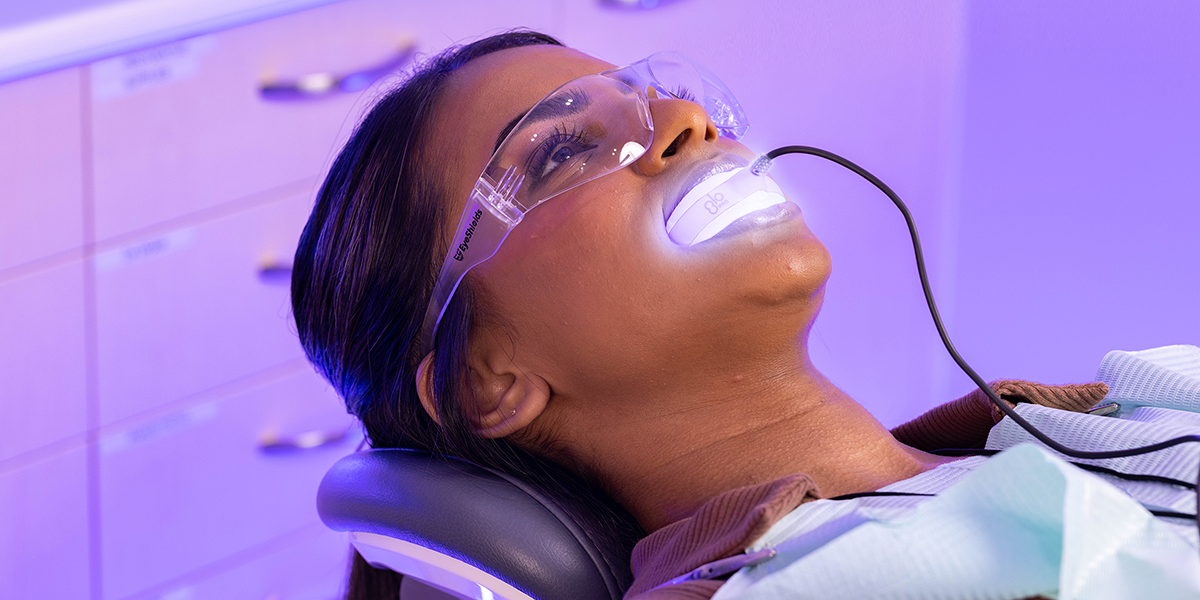As dental professionals, we prioritize precision and effectiveness, meeting patients' needs for quick, optimal results. This is why hydrogen peroxide is often favored for teeth whitening. In this article, we'll delve into why hydrogen peroxide teeth whitening holds a superior position among whitening agents, particularly in comparison to its counterpart– carbamide peroxide whitening, and how innovative technologies are reshaping the landscape of teeth whitening.
Hydrogen Peroxide Teeth Whitening vs. Carbamide Peroxide
Teeth whitening has become a cornerstone of modern dental care, offering patients a cost-effective solution to enhance their smiles and boost confidence. At the heart of effective whitening treatments lie various ingredients, each with unique properties and mechanisms of action. Among these, hydrogen peroxide and carbamide peroxide stand out as the most reliable choices for professionals seeking optimal results. Read on to identify the differences.
The breakdown of hydrogen peroxide is a radical process that instantly reacts with the double carbon bonds that cause yellow stains. It breaks them into single carbon bonds, making the teeth appear whiter and brighter. The hydrogen peroxide readily releases most of its whitening power as peroxides in 30-60 minutes.
On the other hand, the carbamide peroxide slowly breaks down when it comes into contact with water to release hydrogen peroxide and urea. Studies have shown that 10% carbamide peroxide produces only 3.6% hydrogen peroxide. It releases half of the peroxide during the first two hours, while the other 50% will gradually be released over the following hours, which may extend to up to 8 hours.
Why Hydrogen Peroxide Stands Out as a Superior Choice
A 2020 study found that whitening agents with higher concentrations of peroxide and shorter contact time can be less harmful to enamel than treatments with low concentrations for longer application time. Additionally, several studies showed that high concentrations of bleaching gels used for a shorter time did not negatively affect enamel or cause toxicity to the pulp. Meanwhile, lower concentration gels of peroxides used for longer durations caused changes on enamel surfaces, such as decreased hardness and increased surface roughness.
As can be seen, the urea in the carbamide peroxide composition acts as a stabilizer that slows down the decomposition of the hydrogen peroxide, leading to a slower whitening reaction. This slow-release process means you need higher concentrations and more time for it to work on stains efficiently. With this, you are putting the enamel and pulp in a non-favorable condition.
This makes hydrogen peroxide a superior option, as it starts the radical process faster and diffuses through the enamel to break down the stains’ molecules.
GLO Science’s Innovative Approach Using Hydrogen Peroxide
Temperature, pH, and light influence the hydrogen peroxide breakdown reaction. GLO's cutting-edge technology combines the factors that enhance whitening and eliminates the compromises that cause sensitivity and lack of compliance.
While the temperature accelerates the reaction rate of hydrogen peroxide, it can cause sensitivity and irreversible pulpitis. By testing the traditional whitening lamps used in whitening, they generated uncontrolled, excessive heat, causing a rise in the intra-pulpal temperature.
For this reason, GLO amplified the hydrogen peroxide power with its patented mouthpiece technology. The hydrogen peroxide breakdown is accelerated for maximum effectiveness in as little as 16 minutes using advanced gentle heat warming and light within a closed system. This results in shorter exposure time to the whitening agent and, therefore, less sensitivity.
Moreover, the warming heat is modulated to the optimal temperature throughout the treatment. This prevents the pulpal response (zingers) that happens with other professional whitening lights, which generate excessive heat. It also reduces enamel dehydration and stain rebounding.
Equally important, to maintain the whitening gel's longevity, the hydrogen peroxide gel is delivered in a dual-barrel syringe with a pH raiser to preserve the gel and maximize its efficacy once dispensed.
In brief, unlike carbamide peroxide, hydrogen peroxide offers quicker, more efficient results. When coupled with GLO’s innovative technology, it delivers powerful whitening without compromising enamel or pulp health and maximizes the patient’s comfort.
Join us at GLO Science to experience the future of whitening technology. Connect with us today to learn more.


